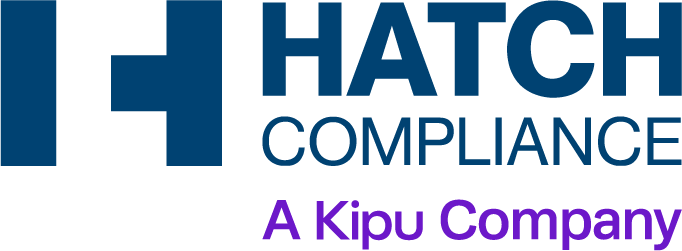Having well-defined guidelines for healthcare policy and procedures is essential. Having current policies and procedures in place is vital on a small-scale level in terms of helping employees do their best work at the enterprise level and governmental level.
For health care providers to deliver efficient quality care to patients, they need policy statements and guidance.
These policies guide their daily decision-making and allow them to focus their efforts on care provision.
The Purpose of Healthcare Policies and Procedures
The overarching goal of healthcare policies and procedures is to standardize daily operations. With standardized policies, there is clarity. This clarity extends to health and safety, legal liabilities, and ensuring you’re meeting regulatory requirements.
When an organization has effective policies, it can help guide decision-making that will meet specified outcomes in delivering a high level of care.
Along with determining the policies, administrators must deliver them to staff effectively to promote compliance with minimal effort.
Other specific purposes of having policies for operational activities include:
- Having defined and written policies can prevent confusion or chaos
- There’s a reduced risk a hospital or healthcare business will make an irrational or potentially even illegal decision
- Helps guide decision-making given a set of circumstances
- Based on generally accepted standards of practice
- Creates consistency and patterns
- Having standards in place also create a benchmark to measure quality for continuous improvement.
- Serves as a form of communication to employees about organizational desired outcomes
- Help employees understand what their responsibilities and roles are within the organization.
- Sets guidelines for cost-effective care that’s also high-quality
- Create uniformity among employees, so there aren’t discrepancies or gaps
- Policies reduce human error and problems with communication
- Better meet accreditation standards
Health policy broadly is described by the World Health Organization as the decisions, plans, and actions to achieve specific goals within a society. While this is a broader-level description, you can take the same idea and apply it to a healthcare facility.
Other definitions of healthcare policy describe it as all the decisions, actions, and goals in the administration and accessibility of healthcare. Policies might include state-level safety and legal regulations, or they can also be detailed at the national level, such as healthcare coverage and cost.
We can break down procedures and policies into health care into four major categories. These include patient care policies, pharmaceutical, and drug policies, security and privacy policies, and employee policies.
Patient Care
Policies that relate to patient care cover the workflows and protocols driving specific treatments and procedures.
Patient care policies also outline how healthcare professionals should respond in different scenarios.
These care policies need to be specific to your facility. For example, if you’re a rehab and mental health center, you will have very different policies than a cancer treatment center.
Pharmaceutical and Drug Policies
Drug policies are essential from a safety and legal perspective in the standard of care. These policies determine how medications are handled and administered. This includes not only prescription medicines but also over-the-counter and non-controlled substances.
You might have policies for the handling, recording, and delivery of medications.
A facility might have policies covering what they do if inventory isn’t accounted for or the potential risks if the medicine is incorrectly prescribed or administered.
Reducing drug-related errors is a big priority across the board in health care organizations right now.
Security and Privacy
Policies relating to security and privacy will outline how your employees should deal with any scenarios that could create a facility security threat. For example, abuse toward staff, theft, and active shooters can fall under this larger umbrella.
All employees need to know and be well-trained in security processes.
As well as physical security, HIPAA guides data and technology-related security.
When a healthcare provider doesn’t comply with HIPAA regulations, fines can be tens of thousands of dollars or more per violation.
Cybersecurity is likely to become increasingly focused on policies and procedures in healthcare. Data breaches are increasing in prevalence and scale, and bad actors are more frequently targeting health care organizations of all sizes because they can provide a treasure trove of personal and financial information.
Employee Health
You need safe, healthy employees for your facility to run the way it should. Your staff often gives all of their time and energy to patients, to their own detriment in some cases.
You should consider things in the policy writing process that promote employee well-being and safety. This could include guidelines about time off, drug use, and reducing exposure to potential pathogens or harmful chemicals.
You might also have a formalized employee wellness program available to staff.
Regulatory Compliance
When you have formalized and written clinical policies and procedures, you will be compliant with the many regulations in the industry.
There are constantly changing laws and regulations in healthcare.
- Each time there’s a new regulation, policies need to be updated and communicated to staff.
- Some of the regulatory agencies and sets of guidelines healthcare organizations are subject to include federal provisions within the Affordable Care Act, state laws and regulations, and CMS Conditions of Participation.
- There are also Joint Commission Standards and other accreditation requirements.
If you’re not keeping your employees updated on changes in regulations and laws in the health care industry, it puts your entire organization at legal risk. You need to have an efficient, modernized way to roll out frontline and healthcare staff changes.
How to Manage Healthcare Policy and Procedures
The best way to make sure that you’re managing all of the priorities above is with a technology-driven solution. Hatch Compliance offers the following features related to clinical practice guidelines:
- Pre-built forms and audits meet state, CARF, and Joint Commission requirements with role-based forms, so employees only have access to what they’re responsible for.
- Automated alerts so you don’t miss renewals or deadlines. With role-based notifications, the appropriate supervisor receives a notice when a form is updated, read, or deleted or when there’s a deadline for renewal inspection.
- The role-based learning management system available through Hatch Compliance includes training, quizzes, and competency assessments specific to a user’s position. Users receive a notification when there’s new training required or when they’re up for renewal.
- Customizable dashboards allow tracking and oversight of key data points.
- The policy matrix and manager ensure that you can access standards and provide a centralized point for storing and distributing policies and procedures specific to your facility. There is the ability to set up automated notifications when standards and regulations change for compliance to occur rapidly.
- Other features include competency assessments that allow you to shorten the time to evaluate staff skills.
Contact Hatch Compliance today by calling 888-428-2430 to learn more about managing healthcare policy and procedures more effectively.













